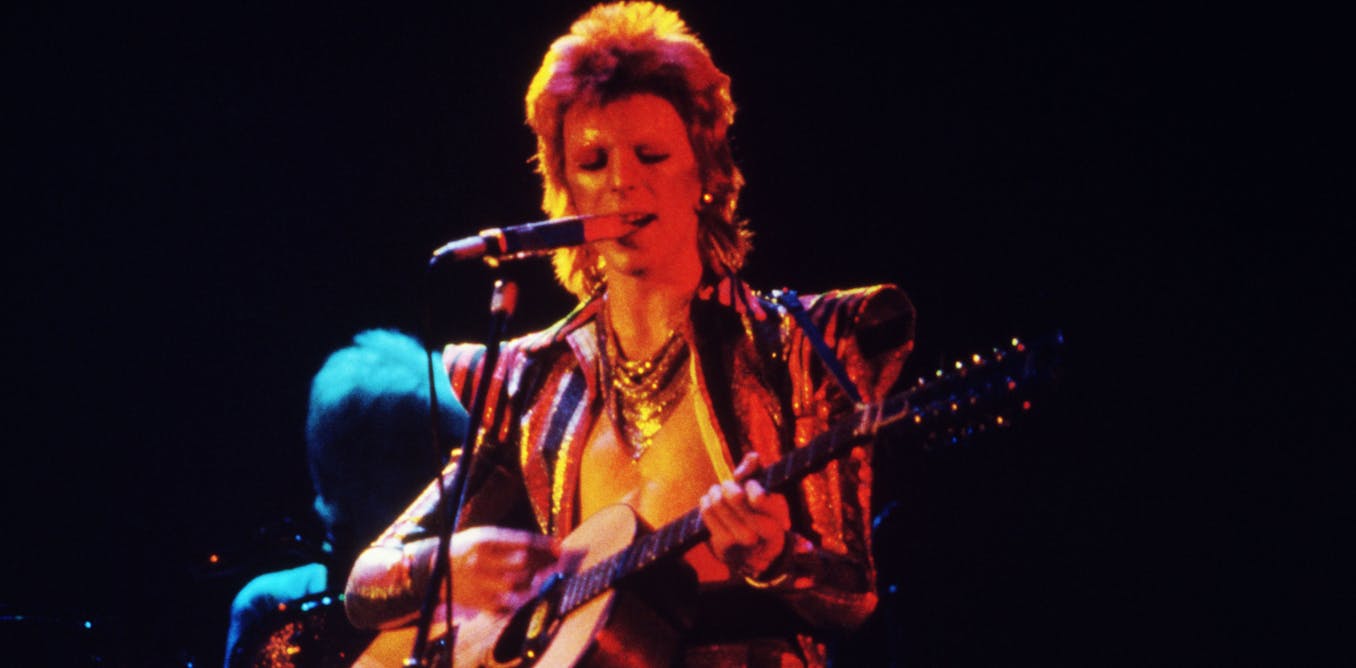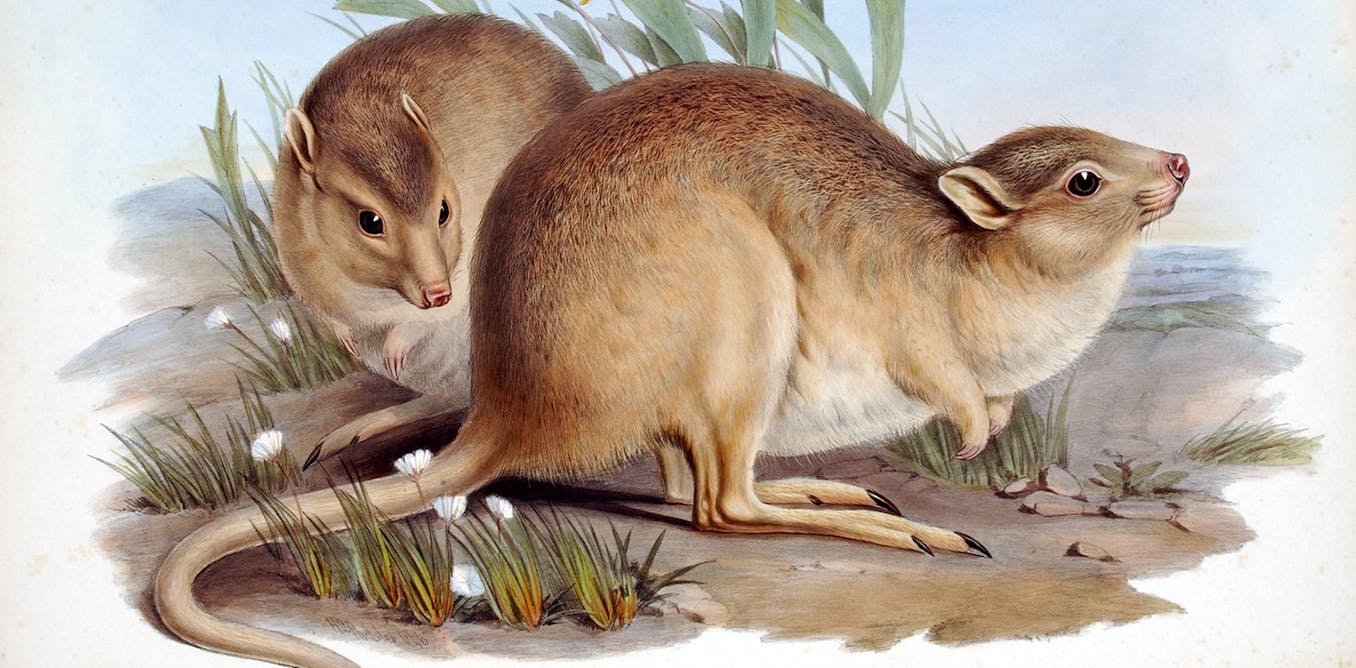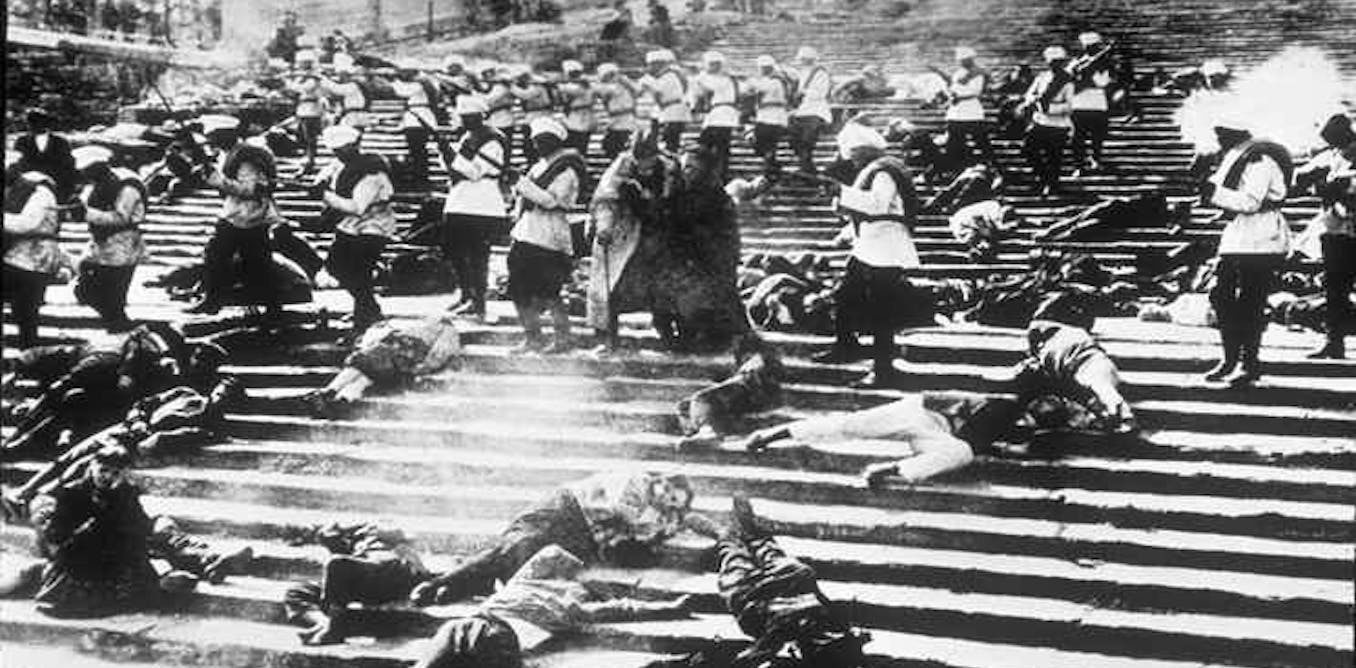In 1964, a bunch of mop-topped young men appeared on the BBC’s early evening Tonight programme, being interviewed by a mildly bemused, but not unfriendly, Cliff Michelmore to promote the “Society for the Prevention of Cruelty to Long-Haired Men”. Their spokesman, making his first television appearance, was 17-year-old David Jones.
Within a decade, and better known as David Bowie, his 1972 performance on Top of the Pops, as Ziggy Stardust, would make his previous appearance seem tame.
As the recent box-set release celebrating Bowie’s Ziggy Stardust period demonstrates, this was part of a prolific, and productive, period when he was evolving rapidly as an artist, experimenting with his image as well as his music.
And the album Ziggy Stardust and the Spiders from Mars, alongside the associated “Ziggy” persona, was the centrepiece of a strategy that cast a decades-long shadow still evident in pop performance today.
At the vanguard of glam rock, Bowie took androgyny into living rooms around Britain. He and his band, bedecked in bright colours, satin jumpsuits and makeup, were a deliberate shock to the mainstream of the early 1970s, not least since Bowie chose this point to come out as bisexual to the music press, only five years after homosexuality had been legalised.
He would later backtrack on this, but alongside the non-conformist clothing and make-up, the sense of a liberatory moment at the time was clear.
Those who followed in his wake, from The Cure’s Robert Smith, to Siouxie Sioux and Gary Numan, all acknowledged a sense of new possibilities emerging.
The Spiders from Mars weren’t the only glam rockers to wear make-up and push the boundaries of onstage apparel. Bowie, though, managed to synthesise the surface aesthetic into a longer trajectory. The likes of The Sweet, Alvin Stardust, and many other glam rockers (including Gary Glitter before his predatory behaviour brought about public disgrace), were essentially performing with time-honoured male – or even macho – stances and outlooks. Bowie introduced an element of ambiguity, even as the music – at that stage – was guitar-driven rock.
Indeed, the Ziggy box-set reveals plenty of connections to his antecedents, with versions of The Who’s I Can’t Explain and Velvet Underground’s White Light/White Heat. In the same period, Bowie and his musical lieutenant from the Spiders, guitarist Mick Ronson, would produce Lou Reed’s breakout Transformer album, which explored themes of sexual and gender orientation, and assist with Iggy Pop’s Raw Power.
While Bowie/Ziggy was indelibly associated with glam, his musical lineage was deeper, and his vision more calculated than the costumes suggested.
Pushing the envelope of stardom
Bowie wasn’t alone in this. It’s hard to know how Marc Bolan – another influential glam rocker – would have progressed in the long-term, due to his tragic premature 1977 death in a car accident. But others who took on some of the trappings of glam – Elton John and Queen, for example – evolved their images, alongside their music, over time.
Ziggy stood out for the suddenness of his arrival, and departure. Bowie’s journey from folk-influenced sounds as a late 1960s singer-songwriter, through the novelty of Space Oddity in 1969 to the melodic orchestrations of Hunky Dory’s Changes and Life on Mars didn’t prepare audiences for the alienness of the Spiders from Mars.
Artists, of course, had changed their image previously – the Beatles being a prime example. But their metamorphosis from the smiley icons of Beatlemania to the experimental hippies of the late 1960s was gradual. Ziggy entered as if he was actually from Mars, burning brightly but briefly before Bowie killed him off, announcing at Hammersmith Odeon in July 1973: “Not only is this the last show of the tour, but it’s the last show that we’ll ever do.”
Rumours of his departure from the music industry were quickly laid to rest by a flurry of releases – another five albums between 1973 and 1977. The role of Ziggy was retired in his restless pursuit of new territory. This, as much as the androgyny, was to be a lasting contribution to the very idea of pop stardom. Aladdin Sane (“a lad insane”), the “blue eyed soul” singer of Young Americans, The Thin White Duke of Station to Station all followed in quick succession, a series of guises blurring the line between performer, person and musician.
It was arguably this ambiguity that allowed him to step back from interview statements, made in the throes of a blizzard of cocaine and amphetamine abuse, that were interpreted as supportive of fascism. When you consider the breadth of his art over his whole career, his claim that “[w]hat I’m doing is theatre, and only theatre” doesn’t seem too outlandish.
Through the 1980s and beyond, Bowie’s pivots became more overtly musical, less all-encompassing. He had nevertheless expanded the envelope for musical stardom. The extra-terrestrial landing and precipitous demise of Ziggy Stardust, and then the roster of facades that followed, shattered the idea that a pop star’s image was static.
Beyond the finery of the New Romantics in the 1980s, his legacy could be seen in the ease with which the likes of Madonna and Prince glided across different images in successive albums. The idea of transformation is now embedded in the vocabulary of pop careers. Taylor Swift is another case in point.
Ziggy played guitar, but his real impact lay in unlocking the relationship between artists and their work, increasing the distance that they could place between their personal and musical selves, and the scope that mainstream pop had for reinvention.

The post “how David Bowie developed the role that would bring him undying fame” by Adam Behr, Senior Lecturer in Popular and Contemporary Music, Newcastle University was published on 07/11/2024 by theconversation.com






































